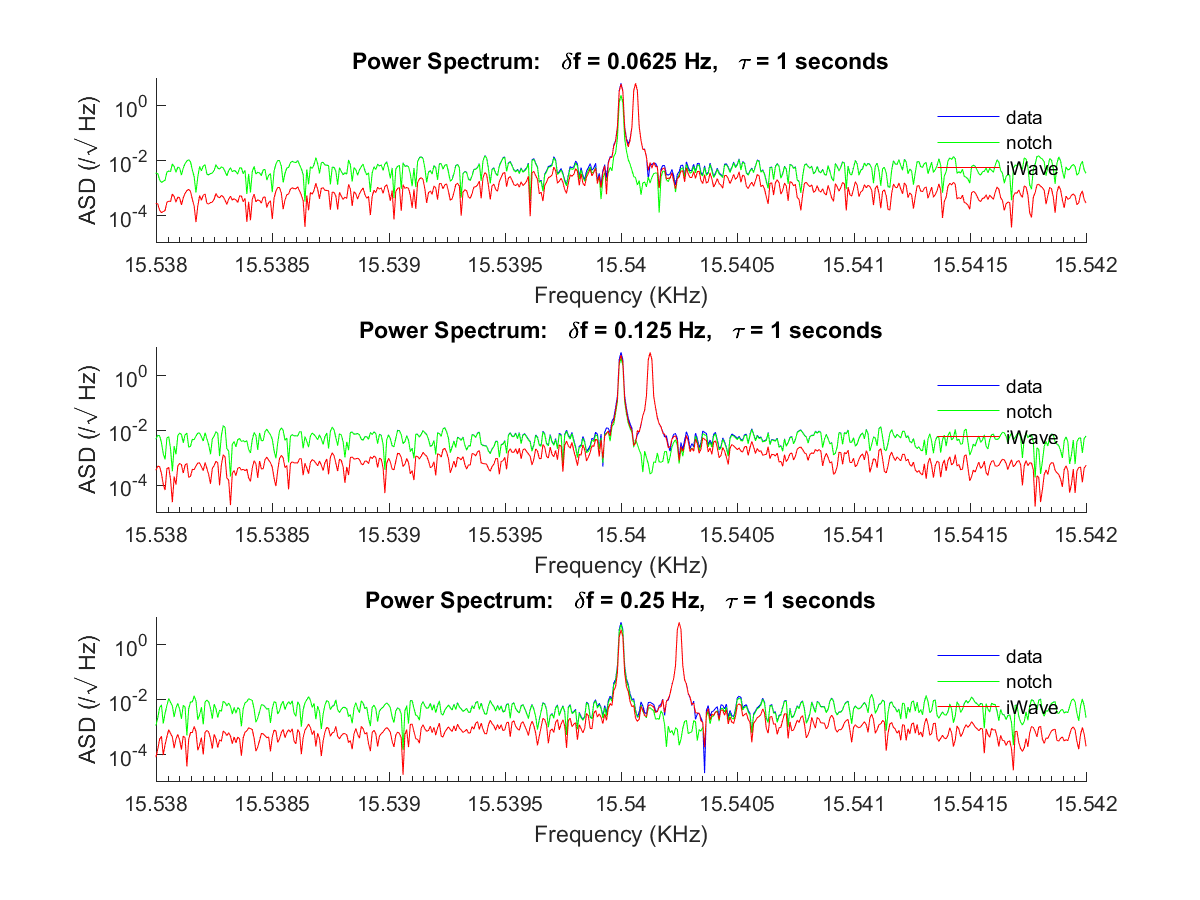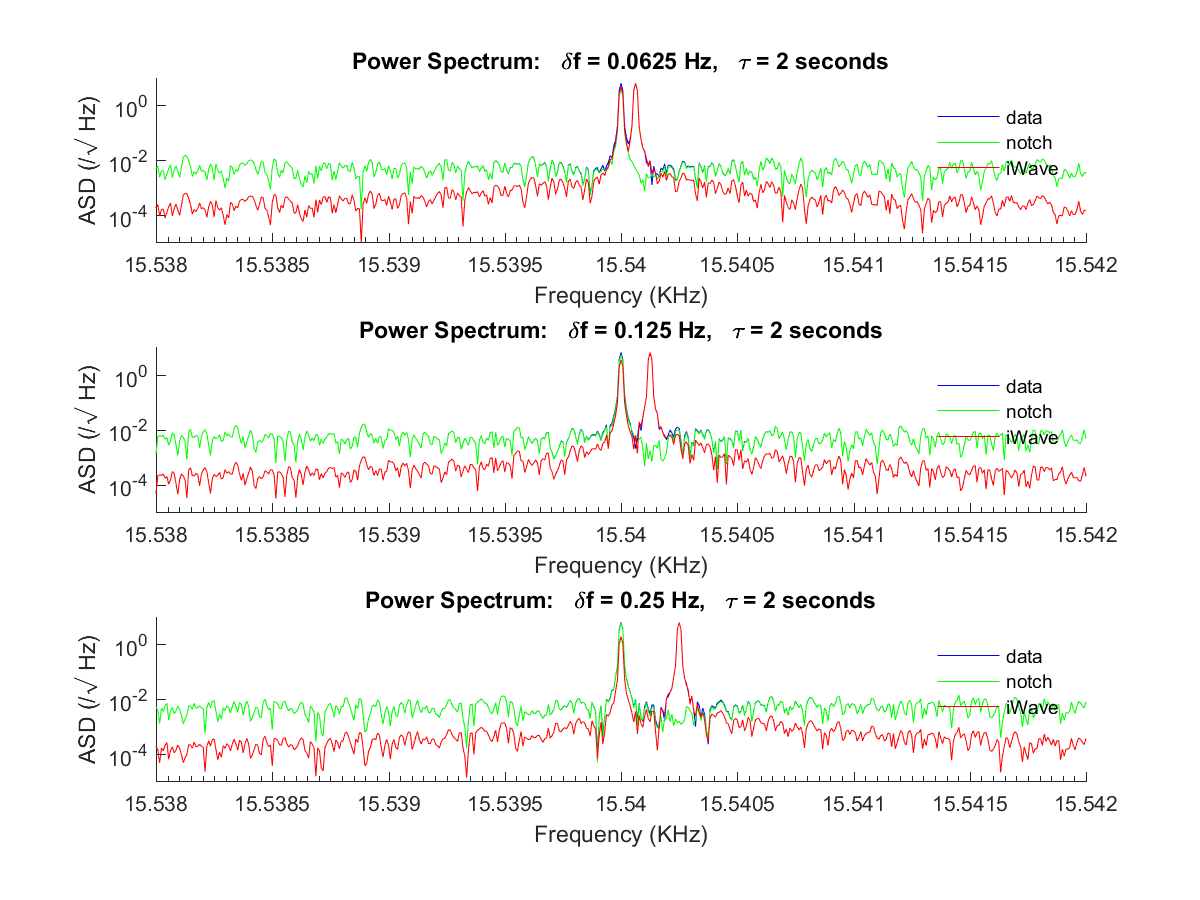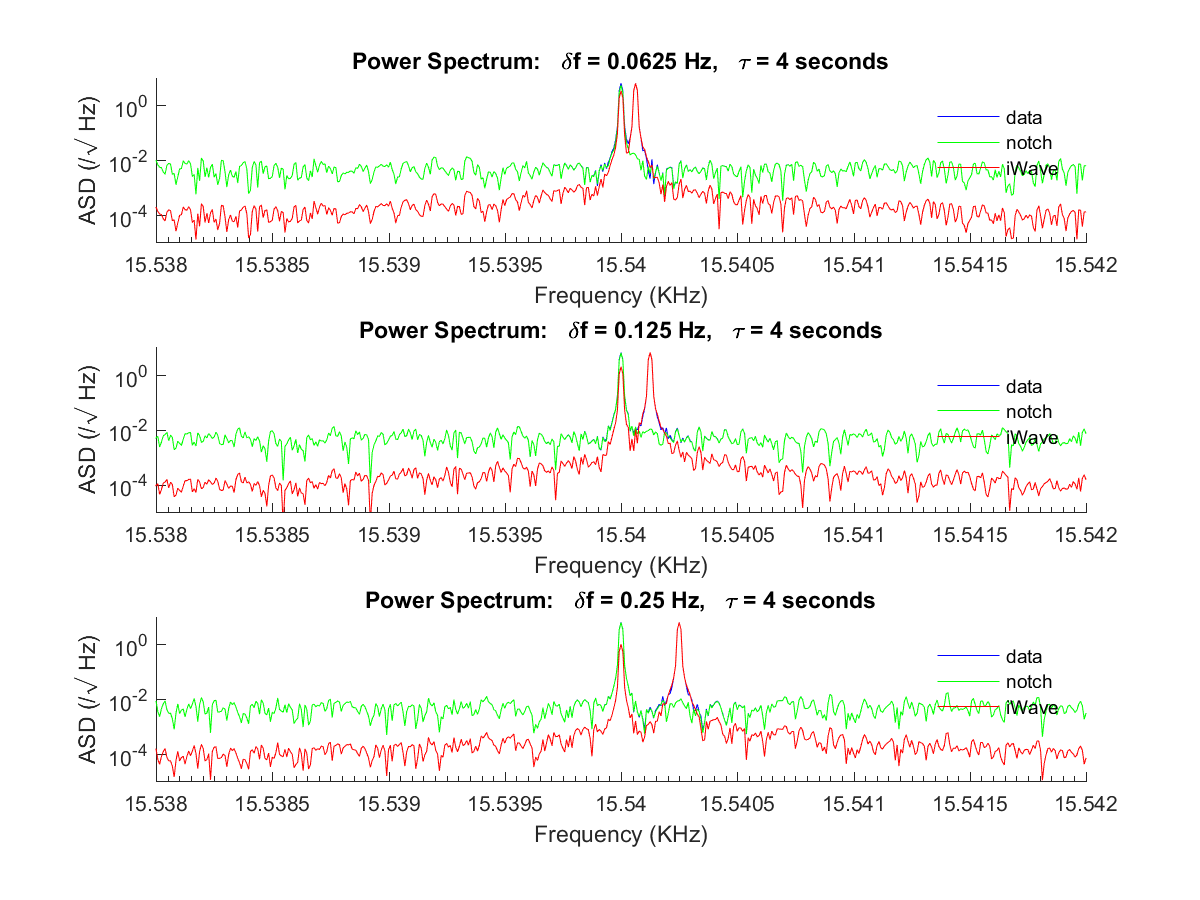Team PI
The presence of multiple mode lines, with frequency separations of less than 1 Hz, in the trans-QPDs or OMC-DCPDs data impacts on our ability to extract a high quality error signal for the purpose of PI damping. In order to deal with this issue, we are systematatically studying the behaviour of iWave in the presence of multiple lines. We present the result of this study for the case where both lines have about the same amplitude (see the image #2) and their frequency seperation equals one the following values: [-2, -1, - 0.5, - 0.25, - 0.125, 0.125, 0.25, 0.5, 1, 2] Hz .

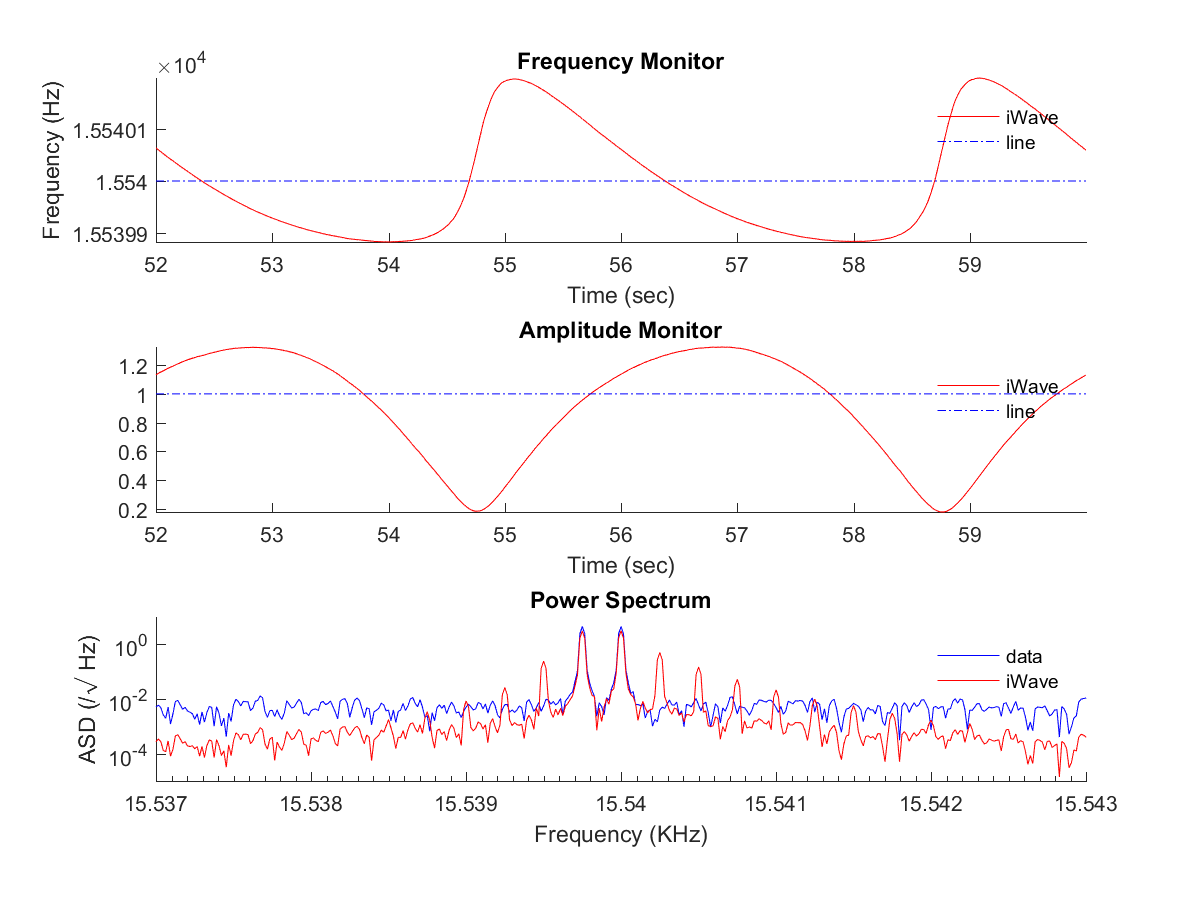
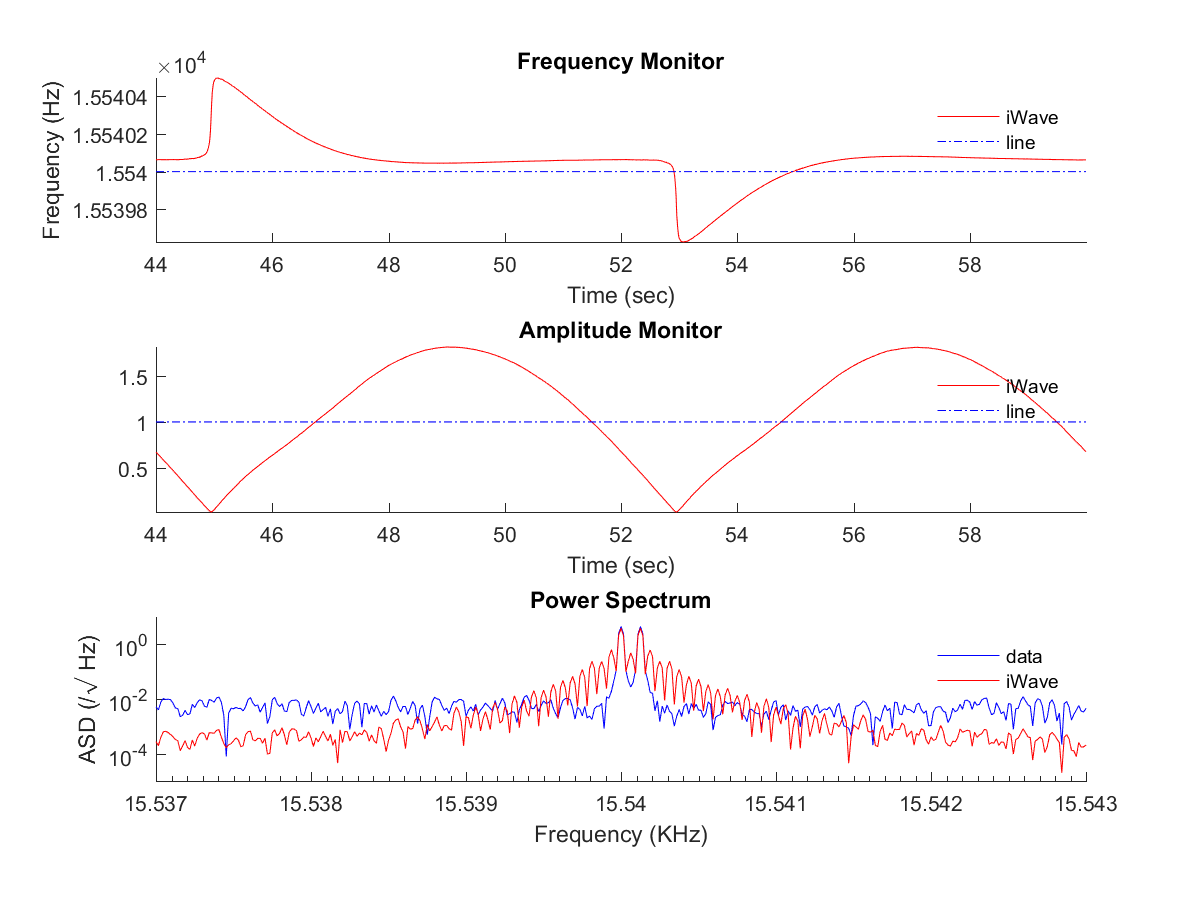
These results show that the amplitude and frequency estimate from iWave suffer modulations whose depth is inversely proportional to the frequency separation of the lines. We can also see that polarity of the frequency modulation matches the frequency difference. Thus, we can in principle distinguish between the cases where the line lies either to the right or to the left of the PI-mode of interest. The idea is to then characterise these modulations so that we can use them as error signals to control the frequency of a dynamic notch filter that is made out of iWave. The iwave notch filter is designed to remove the problematic line with minimal distortion of the background. To do this, we explore the Q-factor parameter space of iWave. The results from this study (see below) suggests that an iWave tau parameter value of 2 seconds is sufficient for separations greater than 0.0625 Hz. We see that the output of the iWave notch filter (the green line) only contains the primary 15540 Hz mode line. The next step is to use amplitude and frequency modulation error signal from iWave to control the frequency of the notch filter. If this control strategy works, we can then combine these filters into a single multi-line iWave block.
